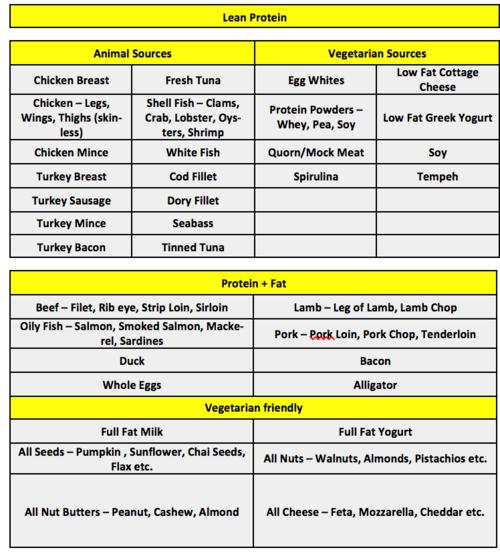You have probably heard of these before, perhaps you have overheard someone at the water fountain saying ‘what’s your macros’ - perhaps not…
Anyway they are a pretty fundamental part of nutrition and if you care slightly about your body (which I guess you do since your here) it is your job to understand them and keep reading.
‘Macros’ is basically a short way to say ‘macronutrients’. Macronutrients are groups of nutrients that provide the body with energy. The 3 main ones are:
- Protein: 1g = 4 calories
- Carbohydrates: 1g = 4 calories
- Fat: 1g = 9 calories
‘‘Ahh, now I know what you mean!’‘

I thought it would be cool to go through each macro nutrient so you know what is what, the best sources, sources to avoid, and how much you should consume of each.
This is part 1 of 3, which will give you the foundational knowledge before going into how you can calculate your own personal macro nutrients targets. By hitting these targets we completely take away the guess work from your diet, and guarantee results.
This will also be useful if flexible dieting is appealing and you would like to join the If It Fits Your Macros tribe of bros (IIFYM).

I eat meat, you don't. We're cool... There is still a solution.
Protein
Proteins are an essential part of every diet, they are the building blocks of the human body. From building new muscle tissue, to repairing old, protein is a staple and usually the first thing we look at in any diet for people looking to lose weight or build more strength and muscle mass.
What we are looking for in our diet is complete proteins, these are protein sources which contain all the essential amino acids.
Amino acids: are the compounds that build together to make a protein molecules. When protein is digested it is broken down into amino acids for the body to use. There are two types of amino acids:
- Essential amino acids - cannot be made by the body so therefore we need to consume them in our diet daily.
- Non-essential - are produced naturally so we don’t need to consume more.

Protein food chart
What sources should I consume?
The most rich sources are the obvious; chicken, meat, fish, eggs, dairy products and nuts.
But I would like to categorise them into:
- Lean animal sources
- Lean vegetarian sources
- Protein/fats
- Vegetarian friendly
Lean proteins are very low in anything other than protein. So is a great option if you only need to consume more protein.
Protein/Fats are options that contain a high amount of fat also - the amount depends on the type of meat .e.g. Sirloin steak contains more fat than Fillet. Think about full fat varieties of bacon and minced meat.
Vegetarians or vegans have more trouble here because animal proteins contain a high amount of protein per portion. We still need to be sure to get adequate protein into our diet and for this I usually recommend taking a protein supplement on top of consuming more vegetarian friendly options each meal.
Vegans can consume soy or pea protein supplements, but want to avoid whey protein, because this is actually an animal protein made from cows milk.
How much protein should I consume?
The amounts people recommend can vary so much.
The old nutritionist told us 0.8g per kg of body weight.
The body builder in the gym across the street said to take 3.5g per kg???
From an exercise nutrition standpoint someone who exercises 3x per week should aim for approx. 2.2g per kg of body weight per day. But higher levels could be recommended depending on your personal goal. I would rarely go lower than this.
e.g. 75kg x 2.2 = 165g per day
So there you go. Next we will touch on Fats

Arnold approves this message